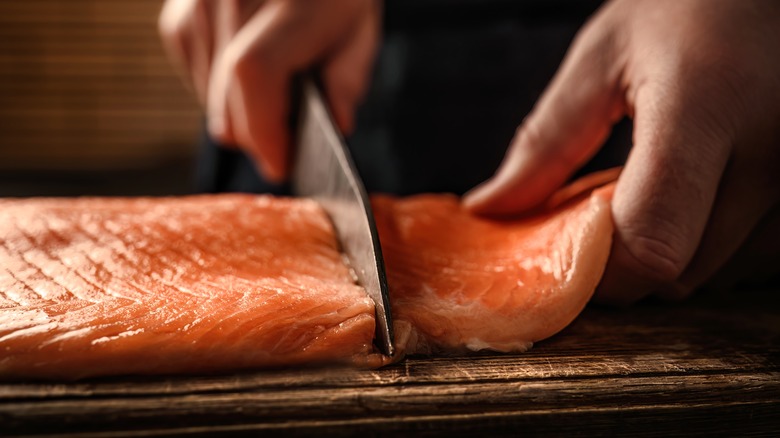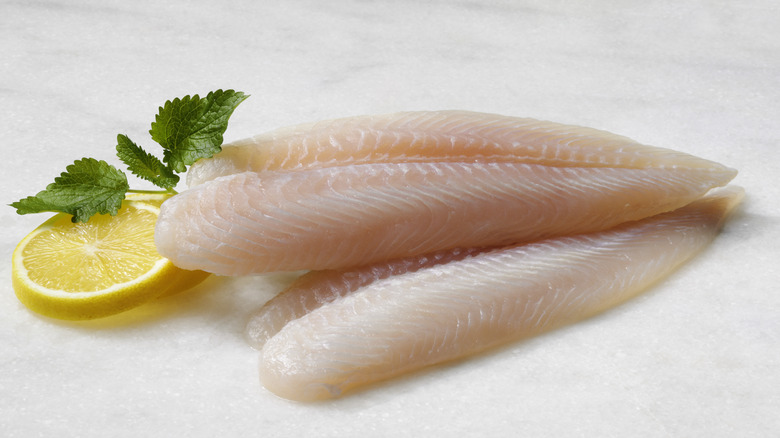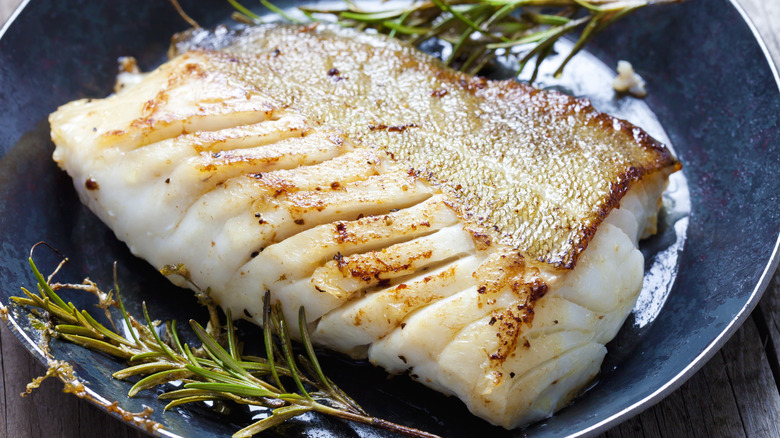The Trick To Cutting An Uneven Piece Of Fish So That It Heats Nicely
If there's one thing that strikes fear in the hearts of home cooks, it's the threat of rubbery, overcooked fish. Luckily, one simple move can help seafood put its best fin forward, no matter the portion's size or shape. It all comes down to cutting and folding uneven pieces of fish to slow down their cooking speed.
The reason to do this is consistency. Depending on the grocery store, a fishmonger may sell identical belly portions of salmon or snapper to shoppers willing to ask. Those are the prized sections that yield a flaky feast. But for most cooks buying seafood, dinner likely includes slices from the lean tail. Though just as tasty, these portions will cook faster, which could throw off the best of meal plans.
Instead of staggering cook times or fighting the animal's natural silhouette, simply bend the tricky pieces in half before they go in the oven. Like stacking two pillows, the fish will double in thickness, mimicking a hearty center-cut fillet. This evens the playing field and takes the pressure off the kitchen timer. Plus, everyone can see they're eating a generous serving.
How to slice and fold your fish fillet
Not all pre-portioned fish is created equal, but a clever cook can fake it with a fold. The easiest way to make sure the fish holds its shape is to score it with a sharp knife. To do so, lay the fillet across a cutting board horizontally so the widest end rests on your left side and the narrowest end rests on your right (or vice versa). Imagine a fish lying with its head near one of your hands and its tail by the other. At roughly the center of the portion, make a vertical slice. The goal here is to score the flesh deeply but not hack all the way through. This is not the time to create a whole new piece of fish!
From there, bend the flesh along the knife cut, and tuck one half under. Now the narrowest end of the fillet will rest neatly beneath the widest part of the piece. No twine or toothpicks needed!
Cooking fish evenly
This trick is especially handy when it comes to oven-baked fish, like lemon herb and crab-crusted baked cod. But one important note before scoring: Make sure to remove the skin (or buy skinned fish). If you don't, the skin will trap moisture and create a steamy mess in the middle. Plus, skinning the pieces makes them easier to maneuver into place.
Once portioned, preheat the oven and season your fillets. Though cooking time will vary, at 425 degrees Fahrenheit, there's a timing rule to follow for better oven-baked salmon. Aim for about eight minutes for every inch of thickness. To know if the fish is cooked, stick a fork in the center of a piece and wiggle it gently.
If the flesh flakes and looks opaque, that's a good sign that dinner is done. If the center is still translucent, give it more time but stay close by. Keep an eye out for white albumin leaking from the fish. Though a little is normal, too much of it could be a warning that the pieces are overcooking.



